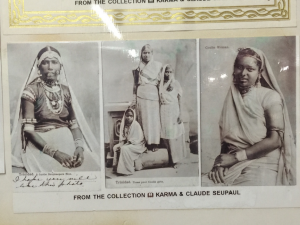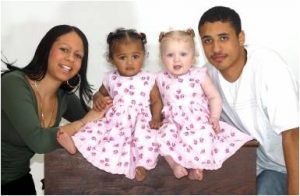I really enjoyed reading Hasu H. Patel’s article, “General Amin and the Indian Exodus from Uganda.” The text was easy to comprehend and the information was laid out very clearly. I was initially shocked at the beginning, after learning that General Idi Amin Dada announced a mass expulsion of Asians. I think it’s surprising that a leader would do that, so soon after taking office, and I was also surprised that most of the African press did not comment and wished to adopt attitudes of non-interference. Another point the article touched on, which made me confused, was that General Amin believed racial intermarriage was the best form of integration, but did not exempt children of Indo-African parents from the Indian Census. I feel like if he genuinely believed that racial intermarriage would help rectify the situation, he would allow these people to be left out of the census. Overall, after reading this text, it seems that General Amin was a leader who did not get much support or respect from the public, which was definitely expected based on his actions and statements.
Author: Lauren
When reading Patel’s work, and learning about the First Indian Memorandum, I was particularly interested about the idea of integration through marriages. I instantly began to think of the music video we viewed, and how the leading female was contemplating whom she was going to marry. She knew that messages and consequences would follow, no matter if she chose the Indian man, or a man from a completely different race. I think both of these cases show how powerful marriages are, and how the act of marrying someone from a different race is so controversial. I would argue that these notions have not changed in contemporary times, and many people face backlash when choosing to marry people from different races, religions and backgrounds. I find it very impressive that the people behind the memorandum at that time had the awareness to see marriage as a distinct tool and factor of integration.
I really liked the lecture on March 1st where we viewed photos of Indian women. In these photos, women advertised their beauty and their prosperity. Almost always, the women depicted were laden with silver and gold. Their bodies showcased these precious metals usually in the form of bangles on their wrists. They also were generally depicted wearing silk blouses and ornies on their head, adorned with lace. I found it interesting that wearing these metals and blouses allowed these women to show their wealth and status. These representations of self were all very similar in the women’s facial expressions. Most women had inscrutable expressions, no photo shew a woman smiling, which is common for photos seen in the present day.

I think it’s interesting that these women were referred to as Coolies because the term was conventionally used to refer to laborers, but in these photos the women appear to be moderately wealthy. Using the term “Coolie” to refer to these women marks them as foreigners in the Caribbean. It made it clear that they were not from this place, and served the purpose of laboring, regardless of their status.
I found our class discussion on the term “hegemony” to be very interesting. Some useful starting terms that served to build towards an actual definition were “oppressed accepts the imposition of values of the dominant group” and “coercion” (Moonsammy, 2018). At first, I considered that the term “coercion” was too pejoratively connoted to be used to describe hegemony, but after we were given a legitimate definition of the term, my understanding was enriched. Hegemony was defined as a “process by which subordinated groups internalize the value system of the dominant group” and that “after dominance is gained, this process is rethought.”
Moreover, this definition was paired with the idea of “givers” and “takers.” Initially, I was unclear on how these ideas were connected with the term hegemony. However, after looking back at my notes, I found the Baronov and Yelvington reading to be extremely useful in unpacking denotations. The definition of the term “mestizaje-créolité” helped me understand the idea of givers and takers. Mestizaje-créolité is defined the concept that those groups that gave the most in the past are now the most privileged (Baronov and Yelvington 240). This term was a little confusing to me, after realizing that all of these terms connect with the term multiculturalism, terms became comprehensible.

Multiculturalism is defined as a term which embraces all peoples while emphasizing the important contribution, and the importance of maintaining each individual cultural identity (246). The result of this embrace is a reverse hierarchy, where the subjugated are seen as the “givers” or those that contribute most to the nation, while the “takers” are viewed in a negative light. Nonetheless, the ultimate question becomes: how can one prove that they are a giver or a taker, and how is it possible for a subordinate group to make any decision based on entitlement to resources when dominant groups set the parameters within which the subordinates operate?
Works Cited
Baronov, David, and Kevin A. Yelvington. “Ethnicity, Race, Class, and Nationality,” in Understanding the Contemporary Caribbean, edited by Richard S. Hillman and Thomas J. D’Agostino, 226-40. 2nd ed. (Boulder, CO: Lynne Rienner Publishers, Inc., 2009)
van Leeuwaarde Moonsammy, Patricia. “Post-Colonization.” Lecture, Dickinson College, Carlisle, PA, February 27, 2018.
“Where are you from? We have been here for 200 years. Our blood, our sweat is in this land, and we will not allow you to take it from us…Who sent you here? The white man. You came here to destroy us…We will defend [this land] with our very lives” (Guiana 1838). This powerful quote from the film Guiana 1838, The Arrival encompasses the enragement felt by the emancipated Africans at the arrival of the Indian indentured laborers. This enragement was towards the white man, and the Indians, and stems from the fears and doubts that were felt after emancipation. From the second that the African slaves found out that they were “free,” there were uncertainties.


Many believed that this was too good to be true; after centuries of abusing slaves, why then would Britain turn against slavery? One possible reason was the arising sense of social humanitarianism due to religious beliefs. A growing middle class that felt it had an obligation to right past wrongs, and there was also a sense by the English population that plantation owners were flaunting their wealth, which was brought to them by the forced labor and torture of humans.
Of course, the actual enactment of abolition of slavery was not as righteous as it should have been. Under the terms of abolition, the British government paid the British slave owners 20 million pounds as compensation for putting an end to slavery. The slaves received no compensation, but instead were forced back into the fields with the new title “apprentices,” and faced the same treatments, but this time around, with low wages.
Works Cited
Jagessar, Rohit. Guiana 1838, The Arrival . RBC Radio, 2004.
It’s a reasonably obvious concept that offspring resemble their parents. The question that scientists had been trying to answer for centuries was: how? In his work on pea plants, ‘Father of Genetics,’ Gregor Mendel observed that there are environmental factors which influence the expression of certain traits (Saraswathy and Ramalingam 14). This was an important discovery because prior to Mendel’s work on pea plants, it was widely believed and accepted by scientists that inheritance was described by blending.

The relationship between race and genetics is relevant regarding the multi-century long controversy which concerns race classification. In the PBS TV Series Race: The Power of an Illusion, race is interpreted as “a concept that was invented to categorize the perceived biological, social, and cultural differences between human groups” (Episode 1). To sum this up, race is a human invention. However, as a concept, race does categorize biological differences. For example, there is a mother and father, both of mixed race, and they have twins that visibly appear to be different races. However, as dizygotic sororal twins, they share 50% of their DNA. Nonetheless, they would be categorized as “white” and “black” due to their appearance. The problem with the relationship between race and genetics is that the concept of race being manipulated as a form of categorization is inherently fallacious. This manipulation is advanced by bigotry and social structures which served as the basis of scientific understanding of race.
Works Cited
Pounder, C C. H, Larry Adelman, Jean Cheng, Christine Herbes-Sommers, Tracy H. Strain, Llewellyn Smith, and Claudio Ragazzi. Race: The Power of an Illusion, Episode 1: The Differences Between Us. San Francisco, Calif: California Newsreel, 2003.
Saraswathy, N. and Ramalingam, P. Concepts and Techniques in Genomics and Proteomics. Woodhead, 2016.
Wade, Lisa. “”Black and White Twins” and the Social Construction of Race.” Sociological Images, The Society Pages, 1 Aug. 2014, thesocietypages.org/socimages/2014/08/01/black-and-white-twins/.
Recent Comments